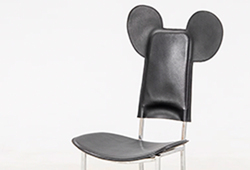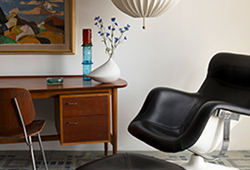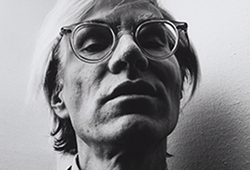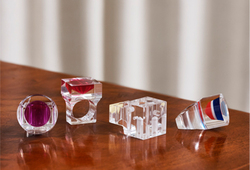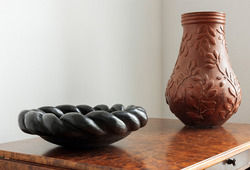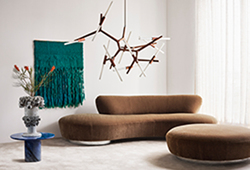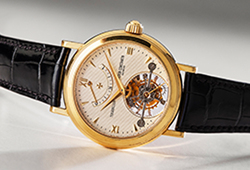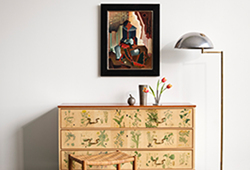Otto Schulz
a Swedish Modern oak and faux leather bar cabinet, Boet, Gothenburg 1948.
Beige artificial leather, geometric decoration with brass nails in "Bo-point" technique, front with initials JL 1948, a pair of doors above pull-out shelves and two drawers, interior with shelving and glass top, profiled moldings, lion paw feet, maker's metal label to the back. Length 85 cm, depth 37 cm, height 140 cm. Key included.
Minor wear.
Designer
Otto Schulz (1882-1970) was a German-born designer and architect who spent the majority of his life working in Gothenburg. In 1920, Schulz founded the company Boet together with Adolf Nordenberg, which became a highly influential interior and furniture manufacturer. Schulz's daring aesthetics have a multifaceted character that has contributed to important elements in both the Swedish Grace and Swedish Modern concepts. Schulz also published the magazine Boet, which, along with the store and business, helped to cement his role as central in interior design contexts. Some of Schulz's characteristics included developing techniques for which he took out patents, such as Bopoint, Bosaik, and Botarsia, all of which contributed to the furniture's distinctive aesthetics and quality.
Read more




